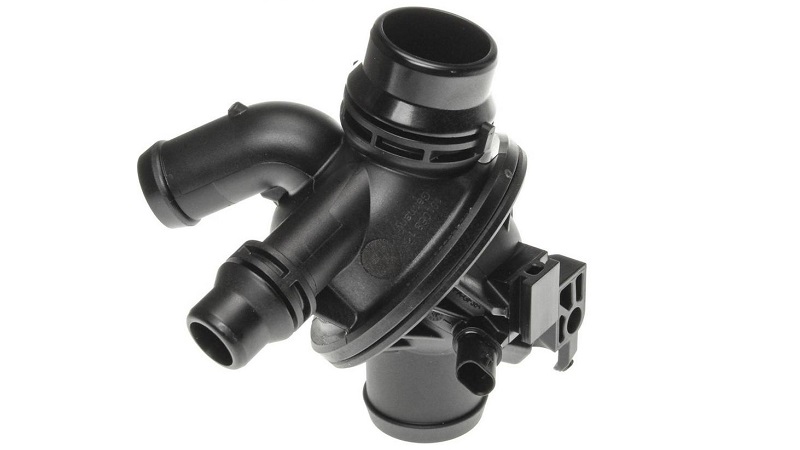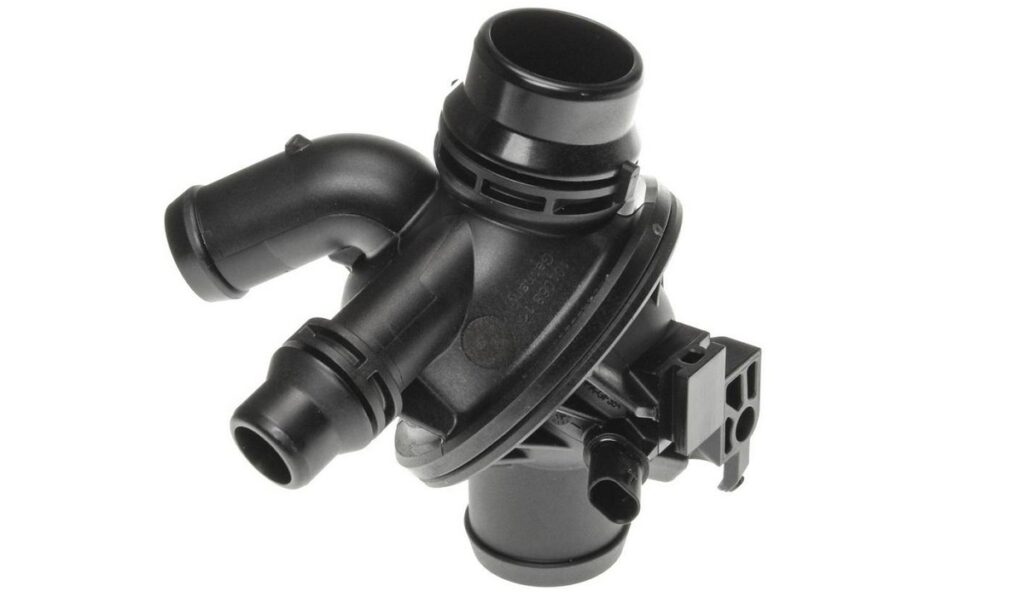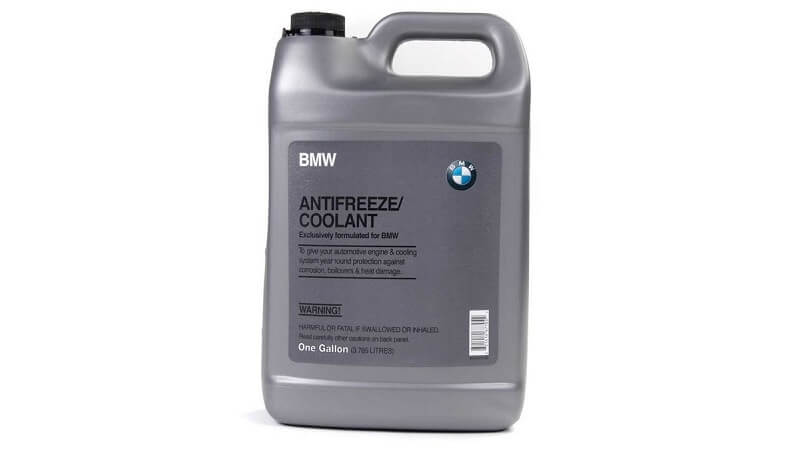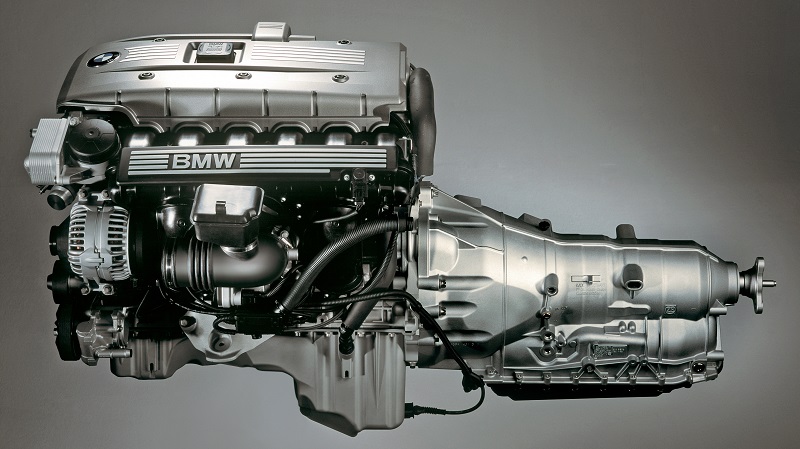When your BMW’s check engine light illuminates, it’s your car’s way of communicating that something isn’t quite right under the hood. One of the many trouble codes that can leave BMW owners scratching their heads is 2EF4. In this blog post, we’re diving deep into the world of BMW diagnostic trouble code 2EF4, shedding light on the mysteries surrounding it, and specifically addressing its association with thermostat issues.
As any BMW enthusiast or owner knows, these machines are precision-engineered marvels, but they’re not without their quirks and intricacies. That’s why it’s crucial to decipher these trouble codes quickly and accurately. In the case of 2EF4, the culprit often lies within the thermostat, a seemingly small yet vital component of your BMW’s cooling system.
Throughout this guide, we’ll explore what the 2EF4 code signifies, delve into the role of the thermostat in your BMW’s performance, guide you through the diagnostic process, and equip you with the knowledge to troubleshoot and potentially resolve this issue on your own. Whether you’re a seasoned DIY mechanic or simply a BMW owner looking to better understand your vehicle, this post will empower you to tackle 2EF4 and ensure your BMW continues to run smoothly.
Understanding BMW 2EF4 Code
To effectively troubleshoot and resolve the 2EF4 BMW code, it’s essential to start with a clear understanding of what this code represents in your vehicle’s diagnostics. Let’s break it down:
What is the 2EF4 BMW Code?
The 2EF4 code is part of BMW’s On-Board Diagnostics II (OBD-II) system, which monitors various components and systems within your vehicle. In particular, the 2EF4 code relates to the thermostat’s performance and is associated with thermostat heater activation.
Significance of the 2EF4 Code
This code is significant because the thermostat plays a crucial role in regulating your BMW’s engine temperature. Proper engine temperature control is vital for performance, fuel efficiency, and emissions control. When the thermostat isn’t functioning correctly, it can lead to various issues that affect the overall health and efficiency of your vehicle.
Common Symptoms of a 2EF4 Code
When your BMW triggers a 2EF4 code, it may exhibit some noticeable symptoms. While the severity of these symptoms can vary, they often include:
- Engine Overheating — One of the most common signs is engine overheating. A malfunctioning thermostat can lead to inadequate coolant flow, causing the engine to run too hot.
- Poor Fuel Efficiency — A faulty thermostat can cause the engine to run at an incorrect temperature, leading to decreased fuel efficiency.
- Reduced Performance — Your BMW may experience reduced power and sluggish acceleration due to an improperly functioning thermostat.
- Check Engine Light — Of course, the most obvious indicator is the illumination of the check engine light on your dashboard.
- Inconsistent Heating or Cooling — Inside the cabin, you might notice that your HVAC system is unable to maintain consistent heating or cooling.
Now that we’ve laid the foundation, it’s time to delve deeper into the role of the thermostat in your BMW’s engine performance and how thermostat issues can impact your vehicle. Understanding this connection will help you appreciate why resolving a 2EF4 code promptly is essential.
The Role of the Thermostat in BMW
To comprehend why a malfunctioning thermostat is a significant concern for your BMW, it’s crucial to grasp the thermostat’s pivotal role in your vehicle’s engine performance and overall functionality.
The thermostat in your BMW is a small yet crucial component located within the cooling system. Its primary function is to regulate the engine’s temperature. It achieves this by controlling the flow of coolant through the engine.
Here’s How it Works
- Temperature Sensing — The thermostat contains a temperature-sensitive element. When you start your BMW, the thermostat remains closed, preventing the flow of coolant to the radiator.
- Warming Up — As your engine warms up, it reaches the thermostat’s set opening temperature (usually around 195°F or 90°C). At this point, the thermostat begins to open gradually.
- Optimal Operating Temperature — Once fully open, the thermostat allows coolant to circulate through the radiator, dissipating excess heat and maintaining the engine at its optimal operating temperature.
- Fuel Efficiency and Performance — Proper temperature control is crucial for fuel efficiency and engine performance. An engine that’s too cold can consume more fuel and produce higher emissions, while one that’s too hot can suffer from reduced efficiency and potential damage.
Impact of a Faulty Thermostat
When your BMW’s thermostat malfunctions, it can have several negative consequences:
- Engine Overheating — A thermostat stuck in the closed position can prevent coolant flow, leading to engine overheating. This not only damages engine components but can also cause severe engine damage if not addressed promptly.
- Reduced Fuel Efficiency — An engine that’s constantly too cold due to a stuck-open thermostat can consume more fuel than necessary, leading to reduced fuel efficiency and increased emissions.
- Poor Performance — Temperature control is essential for engine performance. An improperly functioning thermostat can result in sluggish acceleration and reduced power output.
- Excessive Wear and Tear — Constant temperature fluctuations due to a malfunctioning thermostat can lead to increased wear and tear on engine components, potentially reducing the overall lifespan of your BMW.
In summary, the thermostat might be small, but its role in maintaining your BMW’s performance, fuel efficiency, and longevity is substantial. When this critical component encounters issues, such as those indicated by the 2EF4 code, it’s essential to address them promptly to ensure your BMW continues to run smoothly and efficiently.
Diagnosing 2EF4 Code
Now that we’ve established the significance of the thermostat in your BMW’s performance and the potential issues associated with it, it’s time to dive into the diagnostic process for identifying the 2EF4 code and its root causes. To effectively troubleshoot and address this code, you’ll need the right tools and a systematic approach.
Before you begin, gather the following tools and equipment:
- BMW Diagnostic Scanner — A BMW-specific OBD-II scanner is essential for reading and interpreting the 2EF4 code and other diagnostic trouble codes (DTCs).
- Safety Gear — Ensure you have the necessary safety gear, such as gloves and safety glasses, to protect yourself during the diagnostic process.
Now, let’s walk through the steps to diagnose the 2EF4 code:
Step 1: Safety First
Always start by ensuring your BMW is parked in a safe and well-ventilated area. Disconnect the battery or ensure the ignition is off to prevent any electrical mishaps.
Step 2: Connect the Diagnostic Scanner
Plug your BMW-specific diagnostic scanner into the OBD-II port, usually located beneath the dashboard on the driver’s side. Power on the scanner and follow the on-screen prompts to establish a connection with your vehicle’s computer.
Step 3: Read the Trouble Codes
Once the scanner is connected, instruct it to read the trouble codes. Look specifically for the 2EF4 code, which relates to thermostat heater activation. Note down any other codes that may be present, as they could provide valuable clues about related issues.
Step 4: Freeze Frame Data (Optional)
If your diagnostic scanner supports it, retrieve the freeze-frame data associated with the 2EF4 code. This data can provide information about the conditions under which the code was triggered, helping you pinpoint the cause.
Step 5: Visual Inspection
Perform a visual inspection of the thermostat and its associated wiring and connectors. Look for any obvious signs of damage, corrosion, or loose connections. Check the thermostat housing gasket as well. Address any issues you discover during this inspection.
Step 6: Clear the Codes (Optional)
Before proceeding further, you have the option to clear the trouble codes. However, it’s recommended to do this only after diagnosing and addressing the root cause of the problem, as it can reset important data that may be needed for further troubleshooting.
Step 7: Interpret the Data
Use the diagnostic scanner to interpret the 2EF4 code and any additional codes you retrieved. The scanner should provide a description of the code and its potential causes.
Common Causes of 2EF4 Code

The 2EF4 code related to thermostat issues in your BMW can be triggered by various factors. Identifying the specific cause is vital for effective troubleshooting and repair. Below, we’ll outline some of the common culprits behind the 2EF4 code:
Faulty Thermostat
A malfunctioning thermostat that’s stuck open, closed, or failing to operate within its specified temperature range can trigger the 2EF4 code.
Symptoms include erratic engine temperature, poor fuel efficiency, and reduced engine performance.
Wiring and Connector Issues
Damaged or corroded wiring harnesses, connectors, or terminals related to the thermostat can disrupt the sensor’s signals or heater circuit, leading to the code.
Symptoms may include intermittent thermostat operation and code recurrence.
Thermostat Housing and Gasket Problems
Leaks or damage to the thermostat housing or its gasket can result in coolant leaks and disrupt the proper functioning of the thermostat.
Look for coolant puddles under the car or signs of coolant loss.
Coolant Issues
Low coolant levels or coolant that needs replacement can impact the thermostat’s performance and lead to temperature irregularities.
Keep an eye on the coolant reservoir and ensure it’s at the proper level.
Heater Element Failure
The thermostat contains a heater element that helps it reach its operating temperature quickly. A malfunctioning heater element can trigger the 2EF4 code.
You may experience longer warm-up times and slower engine performance.
Cooling System Problems
Issues with other components in the cooling system, such as the water pump or radiator, can indirectly affect the thermostat’s operation.
Watch for signs of overheating, coolant leaks, or unusual engine temperatures.
Troubleshooting and Solutions
Troubleshooting and resolving the 2EF4 code related to thermostat issues in your BMW requires a systematic approach. Below, we’ll provide a step-by-step guide to help you pinpoint the cause and implement potential solutions:
Check for Faulty Thermostat
Start by inspecting the thermostat itself. If it’s stuck open, closed, or erratic in its operation, it may need replacement.
Solution: Replace the thermostat with a new, compatible one. Ensure it meets the manufacturer’s specifications.
Examine Wiring and Connectors
Carefully inspect the wiring harnesses, connectors, and terminals related to the thermostat for damage or corrosion.
Solution: Repair or replace damaged wiring, connectors, or terminals. Ensure proper connections.
Inspect Thermostat Housing and Gasket
Check for coolant leaks around the thermostat housing and its gasket. Address any visible leaks promptly.
Solution: Replace the thermostat housing and gasket if they are damaged or leaking.
Verify Coolant Levels and Quality
Ensure that the coolant level in the reservoir is at the recommended level and that the coolant is in good condition.
Solution: Top up coolant if needed and replace it if it’s old or contaminated.
Test Heater Element
Verify the functionality of the thermostat’s heater element. It should heat up quickly to aid in reaching the desired operating temperature.
Solution: Replace the thermostat if the heater element is malfunctioning.
Inspect the Cooling System
Check the overall condition of your BMW’s cooling system, including the water pump, radiator, and hoses.
Solution: Address any cooling system issues separately, such as replacing a faulty water pump or radiator.
Clear and Monitor Codes
After addressing the identified issues, clear the trouble codes using your diagnostic scanner.
Monitor your BMW’s performance and temperature to ensure the problem is resolved.
By following these troubleshooting steps and implementing the appropriate solutions, you can effectively address the 2EF4 code related to thermostat issues in your BMW. Regular maintenance and prompt attention to diagnostic trouble codes are key to ensuring your BMW continues to perform at its best.
Preventive Maintenance
Preventing thermostat-related issues and the recurrence of the 2EF4 code in your BMW is not only cost-effective but also essential for the long-term health of your vehicle. Here’s a checklist and some tips to help you with preventive maintenance:
- Regular Coolant Inspections — Periodically check your BMW’s coolant level and quality. Top up the coolant as needed and replace it according to the manufacturer’s recommendations.
- Keep an Eye on Engine Temperature — Pay attention to your vehicle’s engine temperature gauge. If it consistently runs hotter or colder than normal, investigate the issue promptly.
- Scheduled Thermostat Replacement — Consider replacing the thermostat as part of your regular maintenance schedule, especially if your BMW has reached the recommended mileage for thermostat replacement.
- Inspect Cooling System Components — Routinely inspect other cooling system components such as the water pump, radiator, and hoses for signs of wear or leaks.
- Use Quality Coolant — Always use the recommended coolant type and ensure it meets your BMW’s specifications. Low-quality or incorrect coolant can lead to thermostat and cooling system problems.
- Avoid Overheating — Avoid pushing your BMW to extremes, such as driving it when it’s severely overheating. This can lead to costly engine damage.
- Regular Vehicle Maintenance — Follow your BMW’s recommended maintenance schedule, including oil changes and other services, to keep your engine and overall vehicle in good condition.
- Diagnostic Scans — Periodically use a BMW diagnostic scanner to check for trouble codes, even if the check engine light isn’t on. Catching potential issues early can prevent more extensive problems down the road.
- Address Warning Signs Promptly — If you notice any unusual symptoms like poor performance, erratic engine temperature, or changes in fuel efficiency, address them promptly to prevent further damage.
- Consult Your Owner’s Manual — Your BMW’s owner’s manual contains valuable maintenance information specific to your model. Refer to it for guidance on proper care and maintenance.
Preventive maintenance not only ensures the reliability and longevity of your BMW but also reduces the likelihood of encountering the 2EF4 code and related thermostat issues. By staying proactive and attentive to your vehicle’s needs, you can enjoy a trouble-free driving experience and peace of mind knowing that your BMW is in top shape.
Get Quality BMW Thermostats at Bimmers.com
In the world of BMW ownership, staying informed and proactive is the key to enjoying your Ultimate Driving Machine to the fullest. We’ve delved into the intricate realm of the 2EF4 BMW code and its connection to thermostat issues, equipping you with the knowledge and steps needed to tackle this challenge head-on. Make sure to get quality OEM or genuine BMW thermostat to avoid dealing with this issue in the future. Check out our catalog and find everything you need in one place!






